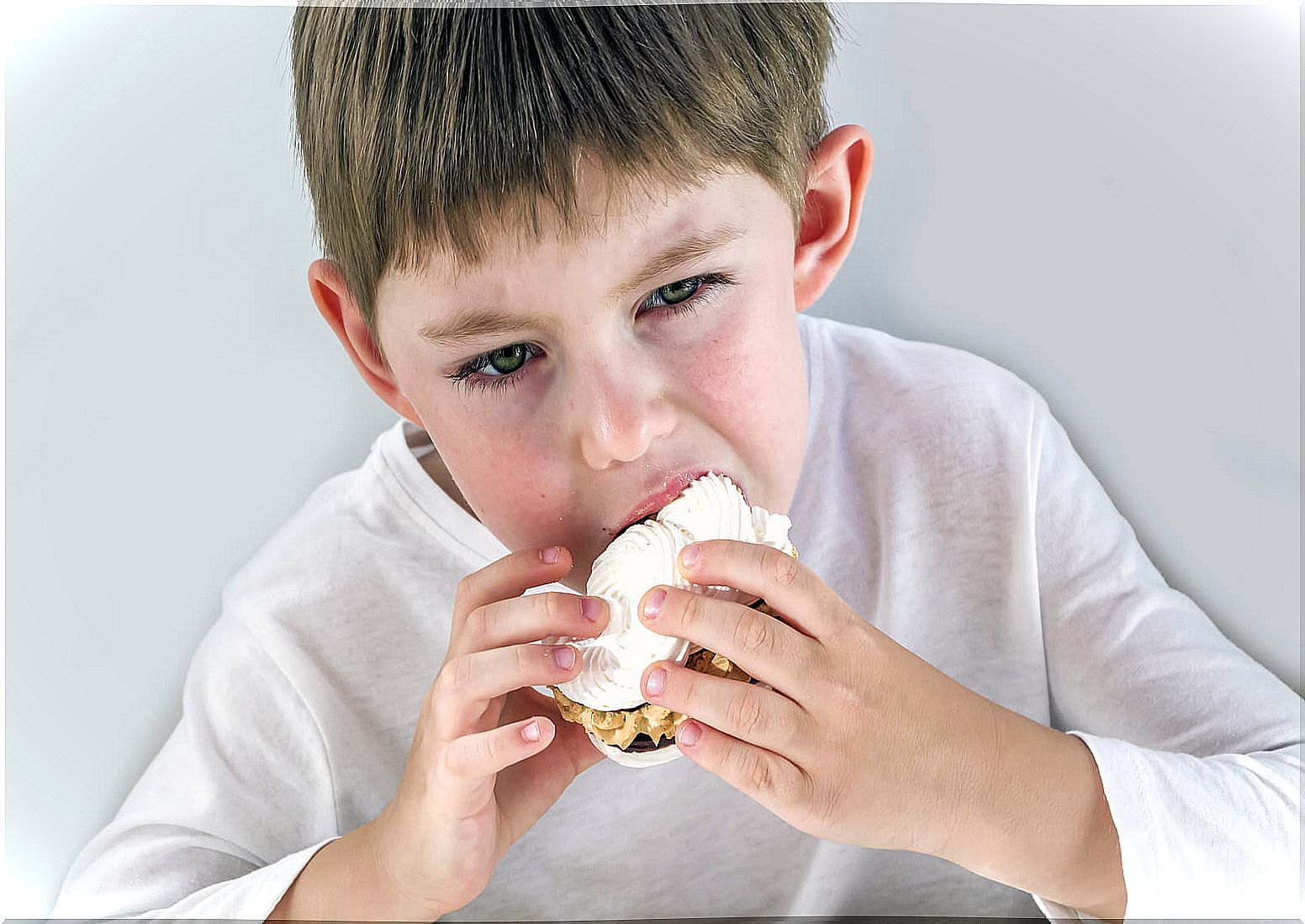Emotional Hunger In Children

Today it is known that there are two types of hunger sensations: physical appetite and emotional hunger. The first refers to common hunger, which is felt in the stomach after having spent a certain period of time without eating. But what is emotional hunger and how to identify it in children? We will explain it to you in the next few lines.
Before approaching this topic, you should know that food and emotions are closely related, since it has been shown that the feelings that one has at a specific moment influence the choices that are made when eating, as well as the amount and how to eat said food.
So, taking this into account, the typical phrase “tell me what you eat and I’ll tell you who you are” could be reformulated and changed to “tell me what you eat and I’ll tell you what’s wrong” .

Emotional hunger in children
Emotional hunger does not occur in the stomach, but in the head. When children feel this type of hunger it is because they want to use food as a defense mechanism to face the negative emotions they feel and that they do not know how else to manage.
Thus, the little ones take refuge in food to calm their emotions, so they increase their intake of foods that they consider comforting, among which are usually those with a high level of sugars and fats. But really these binges are useless, because emotional hunger is impossible to satisfy.
According to nutritionist Ana María Palomino Pérez, some of the negative emotions that most frequently cause the appearance of emotional hunger are anger, apathy, frustration, stress, fear, grief, anxiety, restlessness, loneliness and boredom.
However, physiologically this should not be the case, since negative feelings are often perceived as a threat, causing glucose to be released into the blood and thus reducing or suppressing the sensation of appetite.
Therefore, taking this data into account, it can be said that the impulse to eat when one feels bad is not something innate, but rather a socially learned inappropriate behavior.
Signs to detect this type of hunger in children
Some of the signs that children do not have a real appetite, but an emotional hunger, are the following:
- The feeling of hunger occurs at any time, suddenly and urgently.
- The desire to eat something in particular appears, not just any food will work.
- Larger amounts are eaten than usual.
- Food is eaten uncontrollably and at high speed.
- They appear feelings of guilt, shame or dissatisfaction after eating an excessive way.
- Rapid weight gain is observed , so you can even become obese.

How to avoid the appearance of emotional hunger in childhood?
One of the guidelines that must be followed to prevent children from becoming emotionally hungry is not to reward or punish them with food, because with this they learn to attribute certain emotional states to certain foods, which can lead them to develop a little relationship healthy with food.
Likewise, it is essential to take care of the eating habits of minors, but without being excessively strict, as this can be counterproductive. It is about ensuring that children have a balanced diet, with control of food intake, but without depriving them of any type of food, since this can cause that, over time, they feel the need to compensate for these deficiencies.
Finally, and more importantly, to prevent emotional hunger in childhood it is necessary that families, from the first years of life, take charge of teaching emotional education to children, so that they grow up with sufficient cognitive resources to identify and properly manage their feelings, both positive and negative, without feeling the urge to eat food in a disproportionate way.










